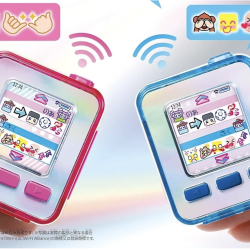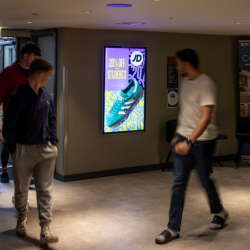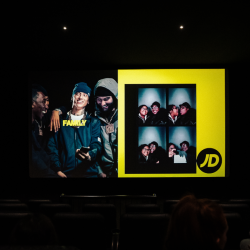Gen Z is a big consumer of both luxury and fast fashion, but they’re facing a tough choice
They want stylish and affordable clothes but also care a lot about the environment and sustainability; 80% of Gen Z value brands with sustainability and social responsibility values, and 66% are even willing to spend more for sustainable brands. This creates a challenge: balancing their desire for trendy, high-status fashion with the ethical problems of fast fashion. However, this also opens up opportunities for brands to use digital innovation to improve customer experiences while also advancing sustainability, supply chains, and authenticity.
Digital innovation, particularly in these spaces and through 3D tools like Clo, offers a way to resolve Gen Z’s conflict between their love for fashion and their environmental concerns. By embracing virtual goods and sustainable practices, fashion brands can appeal to Gen Z values without compromise. Brands that adopt these innovations can become leaders in a new kind of fashion, one that focuses on ethical choices while still appealing to Gen Z’s love for fresh and unique styles.
The fusion of fashion
Blurring lines between virtual and physical fashion represents one of the most fascinating shifts in recent years. With the rise of digital clothing, try-on lenses, AR mirrors, and virtual environments like hologram-projected runways and digital garments being sold on Web3 platforms, the fashion industry is pioneering these new realms of creativity. This trend not only opens up new possibilities for expression, but also challenges traditional perceptions of what fashion is and how it should be consumed.
Shaping the industry with digital tools
Consider Clo, the 3D tool transforming the fashion industry. It not only allows you to visualise an item of clothing before producing a material sample, but works with your patterns and material to maximise efficiency. Could digital tools like these play a role in the shift of fast fashion’s ‘stack ‘em high and watch ‘em fly’ dated concepts? The efficiency of this type of innovation not only benefits the environment, but also allows brands to respond more quickly to trends, potentially reducing the overproduction that characterises fast fashion. According to a Deloitte study, 66% of consumers are interested in using AR to assist their purchases.
Now Virtual try-ons and AR mirrors are also game-changers; as they allow consumers to engage with fashion in new, interactive ways without the need for physical products. However, this could lead to a decrease in returns and unsold products, which are massive sources of waste. Additionally, Web3 platforms and digital fashion shows offer new revenue streams through virtual goods, and could potentially reduce the demand for fast fashion’s endless cycles of cheap, disposable clothing in years to come. Tools like Clo mean that smaller brands and even independent designers can compete with larger companies, potentially leading to a more diverse and sustainable fashion ecosystem. Making high-quality design and production tools accessible to a broader audience could encourage slower, more thoughtful fashion that emphasises quality over quantity.
Navigating the impact of digital innovation
However, the question remains: Can these innovations really replace the fast fashion model, or will they simply become another layer on top of it? Fast fashion thrives on a business model that encourages over-consumption, speed and volume. Even with the adoption of digital tools, if the underlying consumer behaviour and business incentives remain unchanged, the core issues of fast fashion — waste, exploitation, and environmental degradation — will continue. For digital innovation to truly disrupt fast fashion, there needs to be a cultural shift towards valuing digital goods and experiences as much as physical ones. Additionally, the fashion industry needs to prioritise sustainability (self-regulation is drawing to an end which is forcing brands and consumers to change), leveraging digital tools not just for-profit maximisation, but for a more responsible and ethical approach.
Digital innovation holds significant potential to reduce the negative impacts of fast fashion, but it’s not a silver bullet. If used wisely, these tools could play a critical role in changing the fashion industry, but this will require a concerted effort from designers, brands, and consumers alike to shift away from the fast fashion mentality.
In this context, Gen Z’s moral dilemma isn’t just a challenge, but rather a driving force that could lead to the rise of a more sustainable and digitally innovative fashion landscape, where fashion is defined not only by aesthetics, but rather by responsibility and innovation.
Featured image: Sound On / Pexels

































